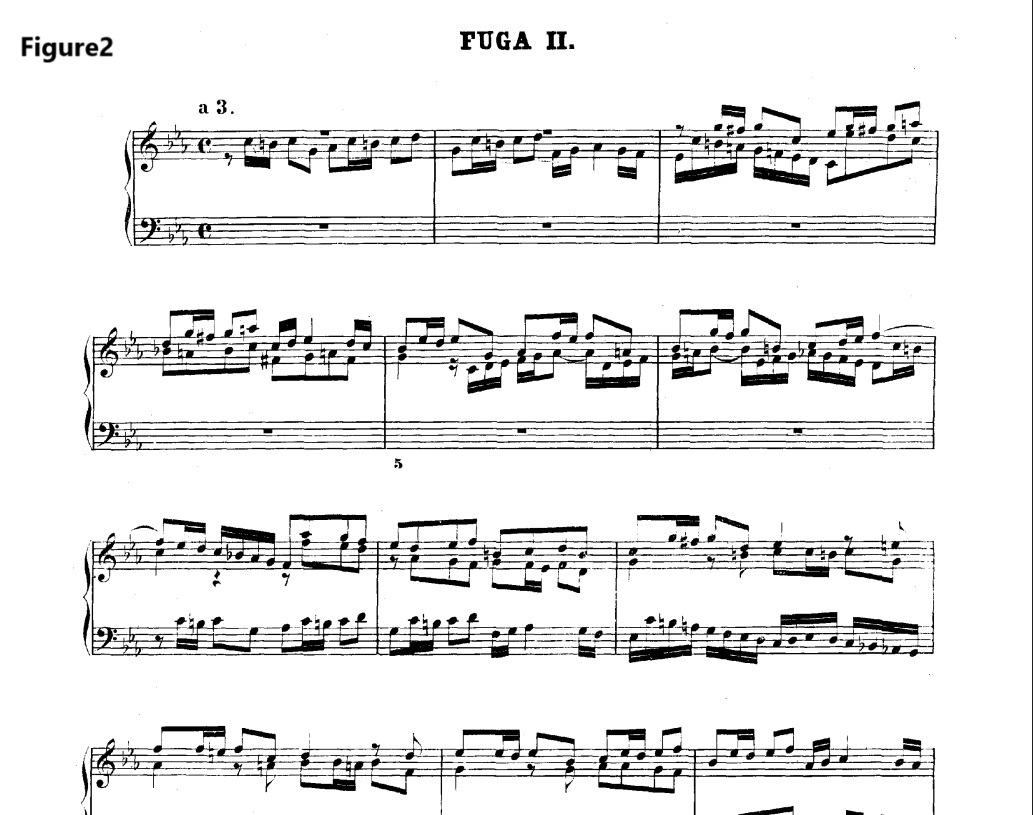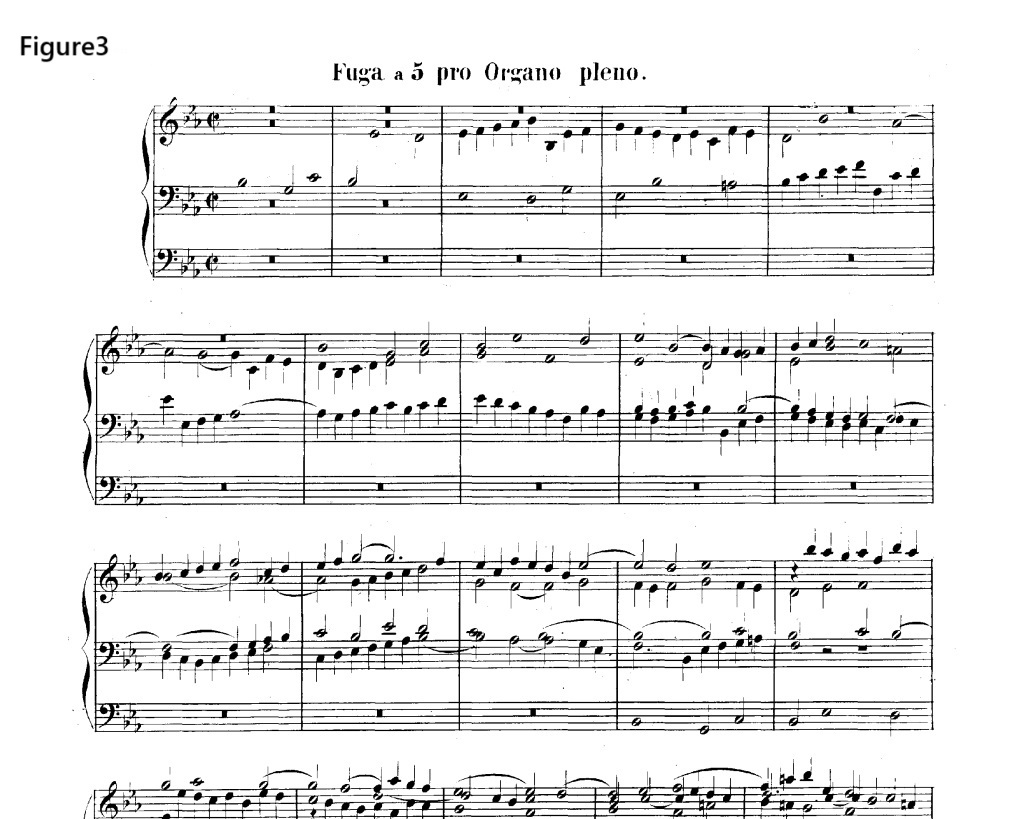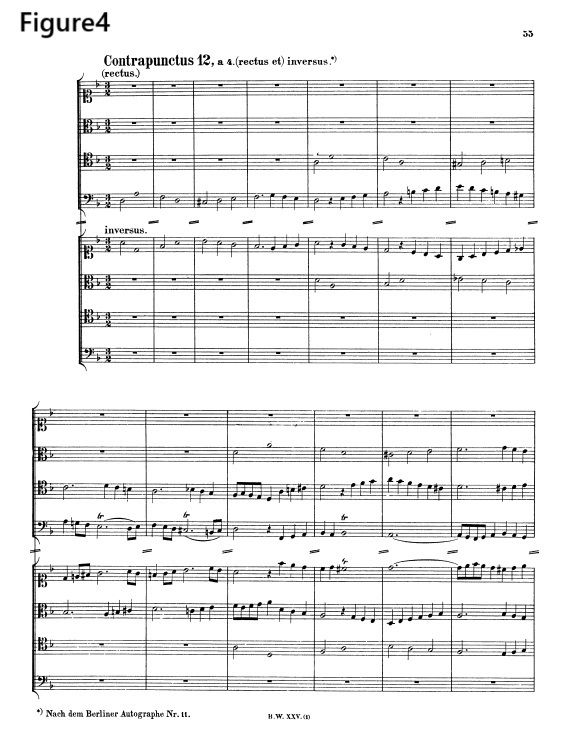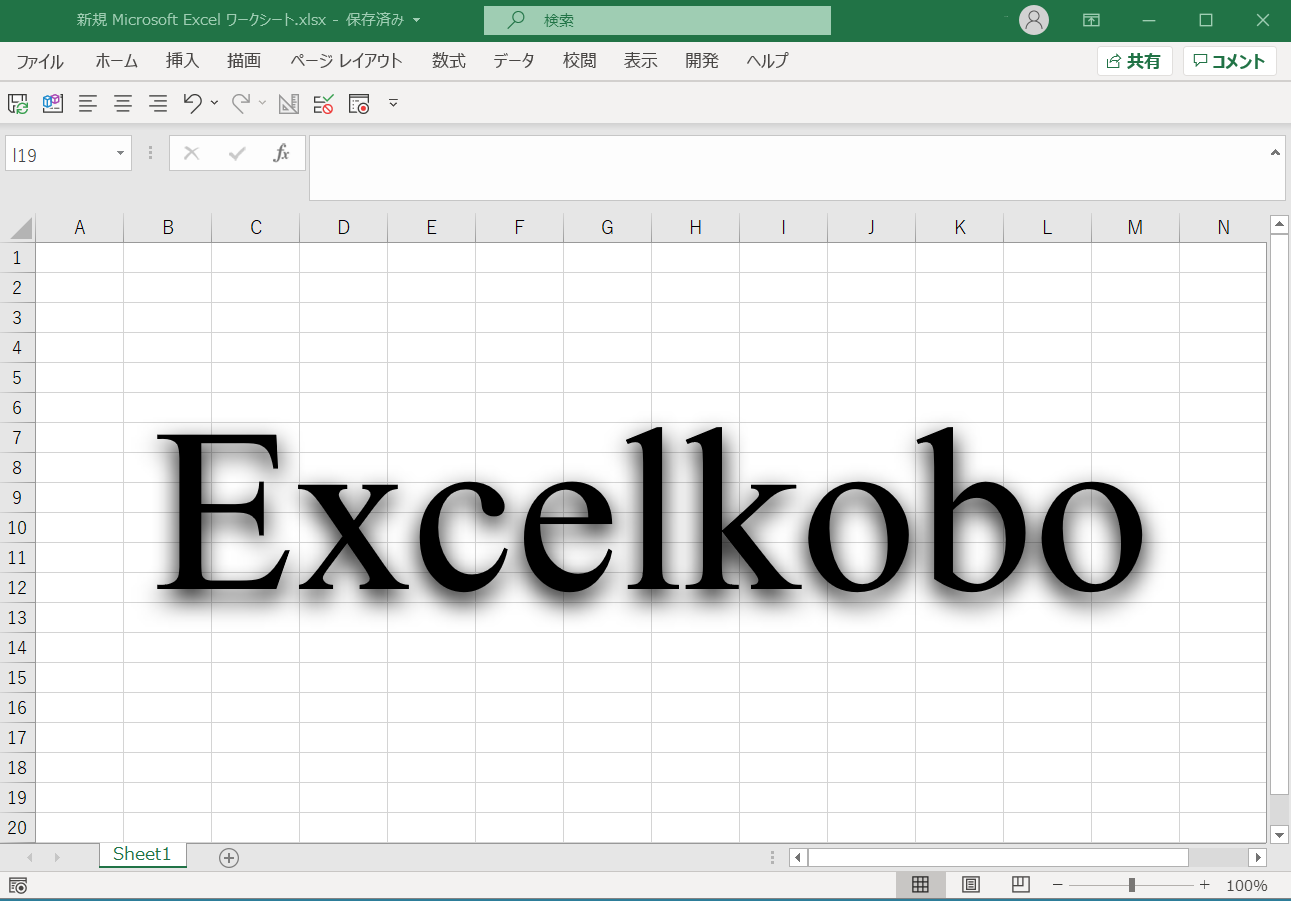About Bach’s strict fugue
When you think of Bach, you think of fugue, and when you think of fugue, you think of Bach. Fugue is, so to speak, synonymous with Bach. Fugues can be roughly divided into the following three types.
① Strict fugue
② Free (style) fugue
③ Fugues somewhere between ① and ②
As the most obvious example, let’s look at “Sinfonia No. 9 in F minor for three voices” (Figure 1). You can see that three voices (which can also be called themes) always appear together, and any of the voices can become the bass voice. In other words, the upper and lower voices can be interchanged in any way. It means that, this is triple counterpoint, also known as “strict fugue”. Of course, if the four voices can be interchanged, it becomes a “strict fugue” of quadruple counterpoint. Let’s look at the fugue in C minor from Book 1 of the Well-Tempered Clavier (Figure 2). This fugue is also a strict fugue with three voices. When the three voices are switched up and down, a four-six chord sometimes results. The four-six chord cannot be used on the first beet of the bar. In Bach’s C minor fugue, an an eighth rest is placed in the one of these voices to avoid the four-six chord, thus avoiding this prohibition. In contrast, a fugue in which the countermelody to the theme changes each time it appears is called a “free fugue”. In Bach’s case, most of his fugues are either “free fugues” or “eclectic fugues” that are a mix of “strict” and “free”.
There are also other classifications of fugues, such as “mirror fugues” “inverted fugues” and “expansion/reduction fugues”. In addition to the term “triple fugue” in the case of triple fugue or quadruple fugue, which means that all three or four voices can be placed in bass, a complex fugue with three or four themes is called a “triple fugue” when the first theme is developed, the second theme begins to develop, the third theme finishes developing, and finally the three themes are developed simultaneously. Many of Bach’s large-scale organ fugues are written in this way. An example is the Prelude and Fugue in E-flat major (also known as “Saint Anne”, Figure 3). In his later masterpiece, “The Art of Fugue”, all of these fugues and canons are included, and it can be called the “culmination” of fugues. Particularly amazing is the “mirror fugue” in which all the voices are switched up and down, which can be called the “miracle” of fugue (counterpoint). The “mirror fugue” is a two sets four pieces with three and four voices (Figures 4 and 5). This is truly a piece that should be called “miraculous music”. Finally, I would like to introduce a fugue that I composed myself. The second and fourth movements are written in the strict fugue style. #bach #fugue #strictfugue #片山俊幸
https://excelkobo.net/…/uploads/score-pdf/Trio-d-moll.pdf






